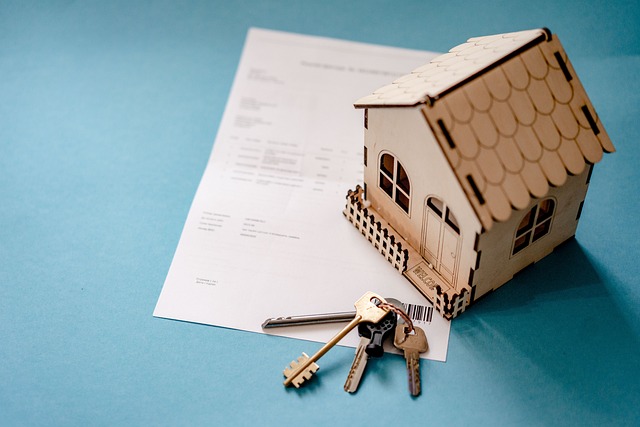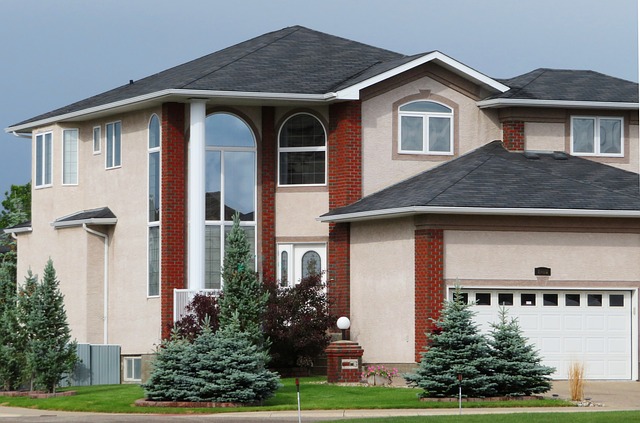Over the past decade, Singapore's Executive Condos (ECs) have evolved significantly, influenced by economic shifts, policy changes, and demographic trends. After five years, ECs exhibit notable market trends critical for investors and residents alike. Renovations and maintenance are pivotal in preserving resale value, with updates focusing on functionality and aesthetics while respecting the original structure. The rental market for matured ECs is dynamic, attracting a diverse tenant base including young professionals, families, and expatriates. Socio-economic factors such as local economic health, employment trends, infrastructure improvements, and community amenities play a significant role in shaping the value of an EC. Investors must closely monitor these influences and policy updates from the Housing & Development Board (HDB), including resale restrictions, pricing models, LTV ratios, and MSR adjustments, to navigate their investments effectively. As EC owners approach the ten-year threshold, they should be aware of new guidelines that could influence the timing and conditions for upgrading or selling their units. The intricate interplay of these factors highlights the importance of staying informed about the evolving property market in Singapore to make strategic decisions regarding living arrangements and financial planning within the Executive Condo After 5 Years ecosystem.
10 years is a significant milestone for any investment, including an Executive Condo (EC). This article delves into the transformation of ECs over time, shedding light on their evolution post-5 years, market dynamics at the decade mark, and the trends in appreciation. We’ll also explore the nuances of maintaining resale value through strategic renovations and upkeep, and weigh the pros and cons of leasing versus purchasing within the EC rental market post-10 years. Additionally, we’ll consider how socio-economic shifts and policy changes have historically influenced the value and desirability of ECs. Join us as we navigate the intricate tapestry of factors affecting Executive Condos After 5 Years and beyond.
- Understanding the Evolution of Executive Condos Post-5 Years
- The Market Dynamics and Investment Potential of Executive Condos After a Decade
- Appreciation Trends: What to Expect from Your Executive Condo Investment Over Time
- Renovation and Maintenance Considerations for Maintaining Resale Value
- Lease or Buy: The Rental Market Landscape for Executive Condos After 10 Years
- The Impact of Socio-Economic Factors on the Value of Executive Condos
- Navigating Policy Changes and Their Implications for Executive Condo Owners
Understanding the Evolution of Executive Condos Post-5 Years

Over a span of five years, Executive Condos (ECs) in Singapore have undergone notable changes, reflecting the dynamic nature of the property market and the evolving needs of homeowners. The initial appeal of ECs as a hybrid between public and private housing has remained consistent, but their features, prices, and resale values have adapted to economic shifts and policy adjustments. With each year, these developments offer more tailored living solutions to couples and families, particularly those who do not immediately qualify for public housing but aspire to own property in desirable neighborhoods. The selection of units, amenities, and facilities within ECs has also seen enhancement, catering to the contemporary lifestyle while maintaining affordability. As these condos age beyond the initial five-year period, their market value, maintenance costs, and the demographic profile of residents continue to shift, necessitating a keen eye on the market trends to fully understand the evolution of Executive Condos post-five years. Investors and potential residents alike must consider the changing landscape of ECs, which includes the impact of government policies, the influence of new developments, and the overall direction of the property market in Singapore.
The Market Dynamics and Investment Potential of Executive Condos After a Decade

After a decade, the market dynamics surrounding Executive Condos (ECs) post-five years reveal significant trends that are pivotal for investors and residents alike. Initially designed to cater to the needs of families with lesser means, ECs offer a middle ground between public housing and private condominiums. Post-five years, these properties often witness a transformation in value and desirability. As the initial minimum occupancy period lapses, units become available for sale on the open market. This maturation phase often sees an uptick in prices, influenced by factors such as property market conditions, location advantages, and the overall demand for housing.
Investors interested in the long-term potential of ECs should consider the track record of similar developments over the years. Typically, after five years, ECs have shown a positive appreciation trend, making them an attractive investment option. The capital gains realized from selling these properties can be substantial, provided that the market conditions remain favorable and the development is well-received by the community. Additionally, the lease buyback scheme introduced by the CPF Housing Grant has further enhanced the appeal of ECs for eligible applicants, suggesting a steady demand from young families. Investors should pay close attention to the evolving policies and economic climate that influence property prices, as these factors play a crucial role in shaping the investment potential of Executive Condos after a decade.
Appreciation Trends: What to Expect from Your Executive Condo Investment Over Time

Over the course of five years, Executive Condos (ECs) in Singapore have shown a notable trend in property value appreciation. These trends are influenced by factors such as market demand, economic conditions, and government policies. Generally, ECs are designed for couples or families with at least one of the applicants being a Singaporean, offering a hybrid of benefits between public and private housing. The initial years post-purchase typically see a gradual increase in property value, which can be attributed to the natural market growth and the maturing estate. By the end of five years, an EC owner might observe a modest uptick in their investment’s worth, assuming the property is well-located and aligned with market preferences.
As one progresses to the decade mark, post-five-year benchmark, the trajectory of appreciation for Executive Condos can be more pronounced. The value of these properties often receives a second wind of growth, influenced by factors such as the completion of nearby infrastructure, population shifts within the region, and broader economic indicators. It’s during this period that the initial investment can mature significantly, potentially offering substantial returns. However, it’s important to consider the specific EC model and its locale, as these elements greatly affect the appreciation trends. Prospective investors should also keep abreast of policy changes and market dynamics to make informed decisions regarding their Executive Condo after 5 years.
Renovation and Maintenance Considerations for Maintaining Resale Value

Over a decade after its initial occupancy, an Executive Condo (EC) enters a phase where renovation and maintenance become critical in maintaining its resale value. Owners looking to enhance their EC post-5 years should consider modern updates that align with contemporary design trends while preserving the original structure’s integrity. Renovations should focus on functionality and aesthetics, ensuring the property appeals to a broad market. Kitchens and bathrooms, often seen as selling points, should be upgraded with quality finishes that are both durable and timeless.
Maintenance is an ongoing commitment that directly impacts the EC’s value over time. Regular upkeep of common areas, such as landscaping and facility management, fosters a sense of community and pride among residents. Additionally, addressing minor repairs promptly prevents small issues from escalating into costly repairs. A well-maintained EC after 5 years is more likely to attract potential buyers, as it reflects the care and investment made by the current owner, potentially leading to a higher resale value when the time comes to sell.
Lease or Buy: The Rental Market Landscape for Executive Condos After 10 Years

Over a decade since its launch, an Executive Condo (EC) after 10 years may present varying options for residents considering their living arrangements. Initially designed for Singaporeans who aspire to live in a condominium but are not ready to commit to a freehold property, ECs offer a middle ground with a lease of 99 years. After 5 years of ownership, however, the market dynamics for renting out these units can shift significantly. The rental landscape for ECs post-decade mark reflects a maturing community with residents who may be looking to relocate or upgrade their living spaces, which in turn influences the supply of rental units available.
Prospective tenants often find these matured EC developments attractive due to their established infrastructure and community amenities. The rental market for ECs after 10 years caters to a mix of young professionals, families, and even expatriates seeking mid-range housing options in desirable locations. The decision to lease or buy an EC at this juncture depends on factors such as the tenant’s duration of stay, financial considerations, and personal preferences. Lease terms for these units are typically structured for a minimum of two years, making them a viable option for those seeking a medium-term accommodation solution. As the ECs age, their value can appreciate, influenced by factors like location desirability, maintenance quality, and overall condition of the development. Potential renters considering an EC after 5 years should assess the property’s track record in the rental market, the condition of the unit, and the remaining lease to make a well-informed decision.
The Impact of Socio-Economic Factors on the Value of Executive Condos

Over the span of a decade, the value of an Executive Condo (EC) is subject to a myriad of socio-economic influences that can shape its market worth significantly. Factors such as regional economic performance and employment rates play pivotal roles. A thriving local economy with stable or growing employment opportunities often correlates with higher demand for housing, which in turn can drive up property values. Conversely, economic downturns or job market contraction may lead to a softening of prices as buyers become more cautious.
Furthermore, the demographic shifts within the vicinity of the EC also impact its value over time. An area that becomes increasingly attractive to families due to improved infrastructure, better educational facilities, or enhanced community amenities can see an uptick in property desirability and value. On the other hand, changes that make the area less appealing, such as increased pollution levels or reduced public services, could negatively affect property values. In this regard, understanding the socio-economic landscape and its trajectory is crucial for investors considering the potential of an Executive Condo after 5 years. Monitoring these trends can provide valuable insights into the expected appreciation or depreciation of such properties, thereby aiding in making informed investment decisions.
Navigating Policy Changes and Their Implications for Executive Condo Owners

Over the span of a decade, Executive Condos (ECs) in Singapore undergo significant changes influenced by government policies aimed at balancing public housing availability and market stability. After five years, EC owners must grapple with potential shifts in eligibility criteria, subsidy entitlements, and loan terms as these policies evolve. The Housing & Development Board (HDB) periodically reviews its policies to address demographic changes, economic conditions, and housing demands. For instance, an owner may face different resale restrictions or pricing mechanisms post-five years, which could affect the market value of their EC. Additionally, changes in the loan-to-value (LTV) ratio and the Mortgage Service Ratio (MSR) can impact the financing options available to owners looking to refinance or take on new loans after a five-year tenure. Staying abreast of these policy adjustments is crucial for EC owners to make informed decisions regarding their housing investments over the long term. After 10 years, the implications intensify, as the possibility of upgrading to a privatized unit or selling the EC may be subject to new guidelines that could influence the timing and conditions of such transitions. Owners must therefore continuously monitor policy changes and assess their implications on their long-term housing strategy. Understanding the trajectory of these policies is not just about compliance but also about optimizing one’s living arrangements and financial planning in the dynamic landscape of Singapore’s property market.
